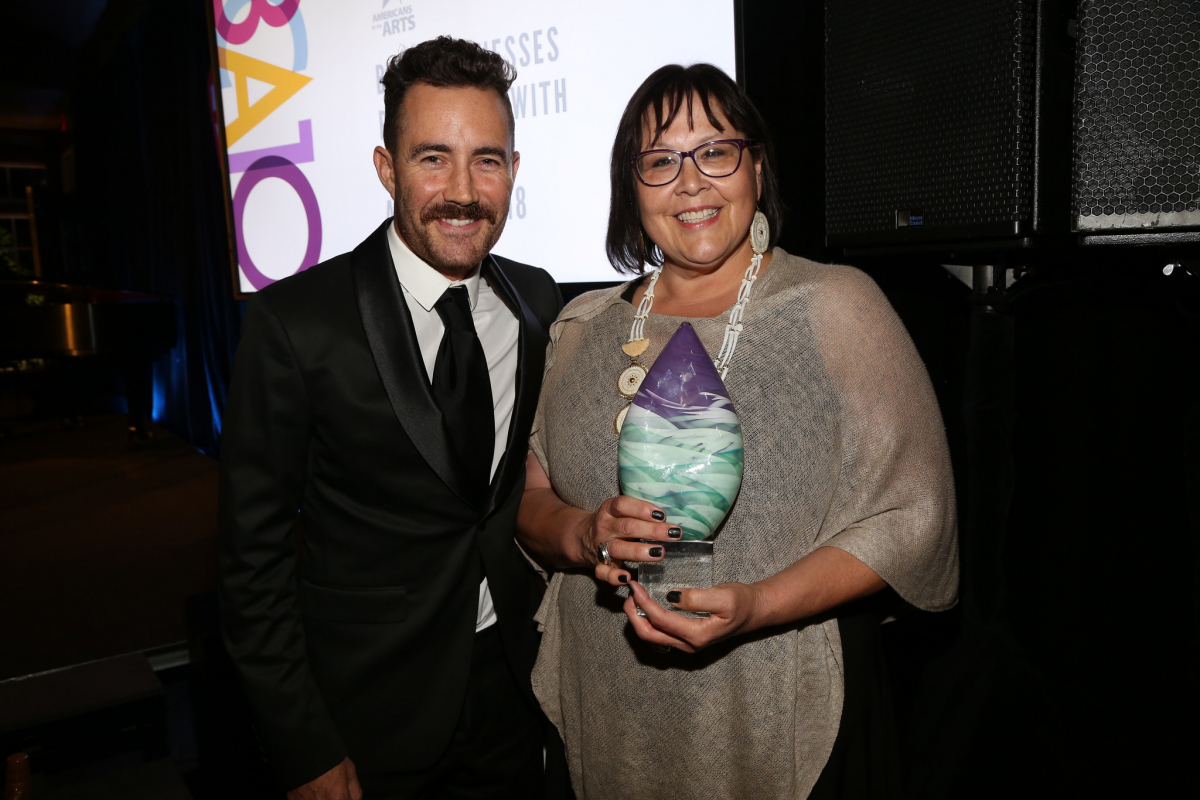Giving Trends in Business Contributions to the Arts
Posted by Nov 15, 2018

Jaclyn Hongsermeier
Earlier this fall, Americans for the Arts and The Conference Board released the Business Contributions to the Arts: 2018 Edition report. The results provide both an insight into current corporate giving trends as related to the arts and an opportune moment to look back on broad trends. While the survey methodology has changed numerous times over the years, making exact comparisons challenging, we can examine the overall progression.
History
Americans for the Arts and The Conference Board first partnered for the release of 1968 Business Support of the Arts, when The Conference Board was known as the National Industrial Conference Board. Since then, Americans for the Arts has partnered with Touche, Ross and Company, Research and Forecasts, Inc., and Shugoll Research to produce reports on business contributions to the arts. Americans for the Arts and The Conference Board collaborated again for the 2017 and 2018 editions of the survey.
Small and Midsize Businesses Are Consistent Arts Supporters
The first BCA survey in 1968 tagged small businesses as being likely supporters of the arts, and this has remained true. While the survey definitions of small or medium sized businesses have altered to reflect economic growth, the support from these small businesses has continued. In 1989, 67% of total arts contributions were made by small and medium businesses (those earning under $25 million in revenue). In 2010, though the recession decreased overall giving, small businesses (under $25 million in revenue) represented 69% of arts contributions. In the most recent report, arts contributions represented more than 50% of philanthropic allocations in both small and medium businesses. Likely because they are locally based and connected to their communities, small businesses are consistent supporters of the arts during times of both economic uncertainties and growth. (Arts organizations can learn more about creating partnerships with small and midsize businesses in our pARTnership Movement toolkit.)
Reasons Why Companies Support the Arts
Returning to the 1968 survey, the top two reasons businesses contributed were to improve company image, and to improve sales and services. By 1989, the reasoning had shifted, with the top reasons being to contribute to society and to improve relations with society. The shift from companies looking inward at revenue, to outward at their impact on the communities, is a meaningful change. Michael E. Porter and Mark Kramer of Harvard Business School and FSG, respectively, defined this growing intersection between business opportunities, social needs, and corporate assets as “shared value.” [1] As the reasons for businesses to support the arts evolve, there is a movement towards finding this shared value. In the reports from the 2000s, community continues to be a strong aspect of why these companies give. Programming that enhanced arts education or reached underserved communities were common incentives for contributing to a specific arts organization. Both the 2017 and 2018 editions make clear that having and maintaining a long-term relationship with an arts organization is a strong reason for support.

Trends in Arts Giving Follow the Economy
Overall, giving trends have fluctuated with the economy. In the The BCA Report: 2007 National Survey of Business Support to the Arts, 69% of business respondents supported any philanthropic cause. In The 2010 National Survey of Business Support to the Arts, there was a decrease to 52% of business respondents supporting any philanthropic cause. This decline aligns with the financial crisis starting in 2008. Looking at matched data between the 2007 and 2010 report shows a 14% decline in total arts giving, showing that arts contributions took a smaller decrease in funding than the average philanthropic contributions. The recovery from this crisis did take time. In The 2013 National Survey of Business Support to the Arts, 64% percent of companies contributed to a philanthropic cause, nearly reaching 2007 giving levels. The 2013 study showed that businesses had a positive outlook, with 20% intending to increase support in the following year.
According to the 2018 report, of the companies surveyed, 23% expect to increase their support in the next year. Funding for the arts through the private sector continues to grow as decision makers recognize the positive impact art has on the lives of employees and communities.
[1] Michael E. Porter and Mark Kramer, “Creating Shared Value”, Harvard Business Review





